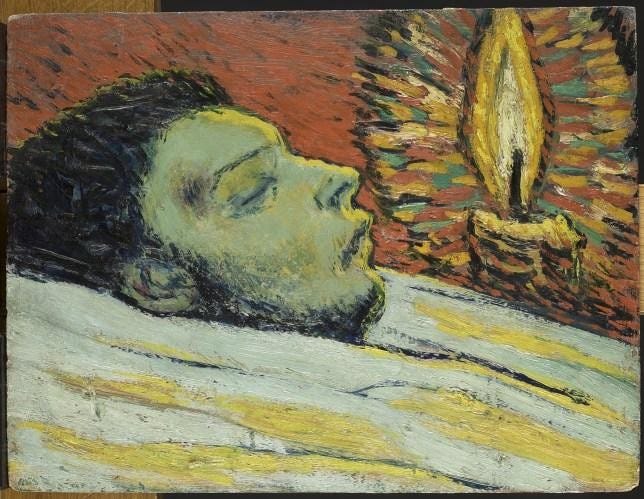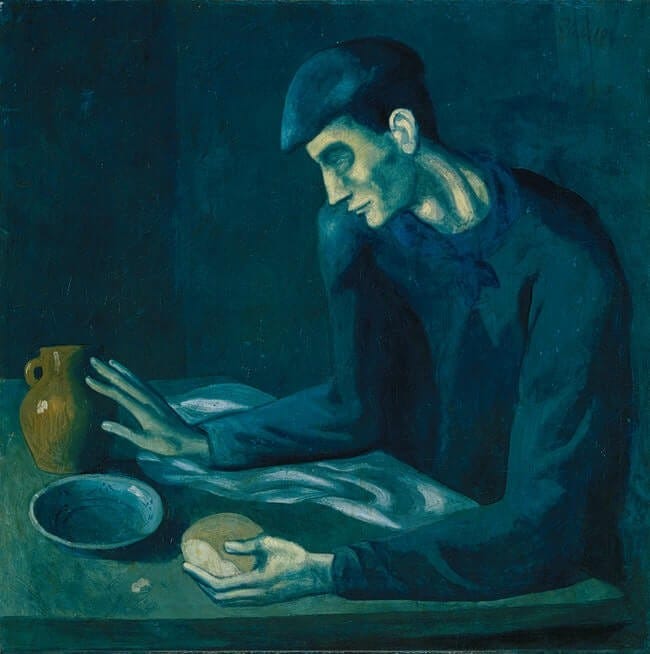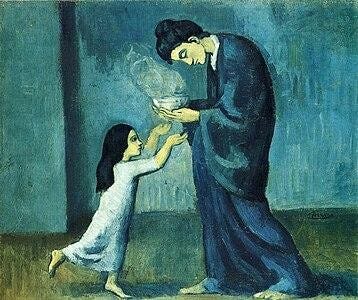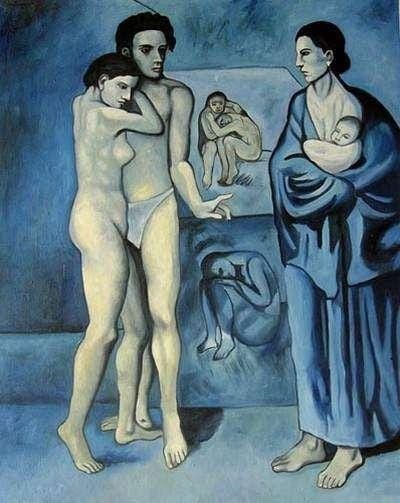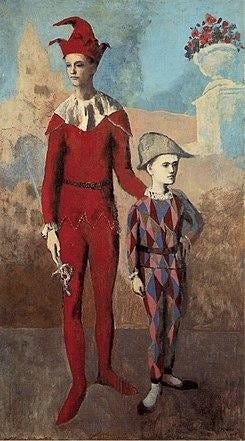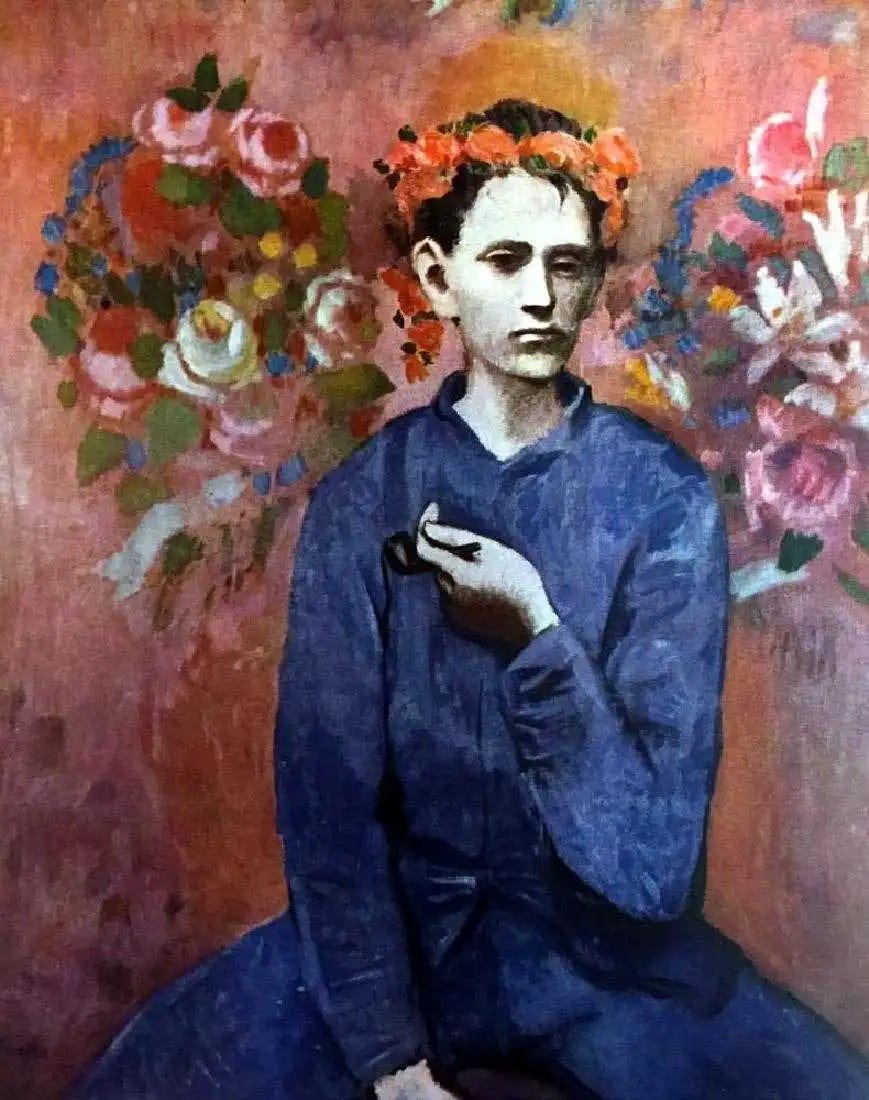Picasso proved we can create even under the worst circumstances
Creation continues even when we know death is the only assured outcome
Ideas to help marketers master brand growth and career navigation. 3,787 readers subscribe to Performonks. If you haven’t yet, go here.
Check out my new website. Read The India Playbook.
In 1900, Picasso's close friend and fellow artist- Carlos Casagemas committed suicide.
A few weeks later, Picasso completed The Death of Casagemas in his friend's remembrance. The painting combined a warm palette of reds and yellows.
This would be the last time he would touch these colors for some time to come.
For the next four years (1901-1904), Picasso painted only with blue.
Monochromatic blue conveyed what Picasso might have been feeling - deep melancholy and sadness at losing a dear friend. Subjects in his paintings also seemed to embody a glumness and a smell of loneliness and despair.
I am sharing some of his creations for you to feast your eyes on before I come to the twist in the tale.
While the melancholic nature of the blue paintings reflected Picasso’s state of mind, these paintings are believed to be products of scarcity.
It is said that one day, Picasso ran out of all paints except blue. When he started toying with monochromatic blue, he liked what he saw.
So he continued.
The art world believes Picasso’s Blue Period (1901–1904) is one of his best.
We've all been irrational and allowed minor inconveniences to derail our performance. An already grief-stricken Picasso could have allowed the lack of a rich color palette to tip him over the edge. He could have sunk deeper into despair, called God unfair, and stopped painting altogether.
Instead, he chose to channel his emotion into some of the best work of his life.
The point I make is that melancholy and activity can go together. That we can create even under the worst circumstances. Most importantly, we must continue to create, no matter what.
We are surrounded by stories of people who have created against all odds.
Shantaram is a semi-autobiographical novel by Gregory David Roberts, an Australian and ex-convict. He wrote Shantaram twice while he was in jail. Both times, his manuscript was destroyed.
He told Entertainment Weekly: “I was about 400 pages in when I came back from an exercise period and discovered that a prison officer had torn my manuscript into tiny fragments and that they were flowing out of the toilet bowl. He was a very harsh critic. If you get past something like that, you can take some criticism when you get it from book reviewers.”
Eventually, he did complete the book. It became a bestseller and has now been adapted into an Apple TV series.
You may think it's ironic that I use the story of death and melancholy to discuss the act of creation. But that's precisely the point.
There is nothing more final than death. Why does anything even matter if we all die one day?
The point is that even after knowing the inevitable, we continue to create and build.
We must. Because the work is the win.
This story comes full circle when we see what Picasso painted next.
One of his most important paintings from this period is The Life - an endless loop of birth, romance, and death.
He seemed to say that death should not stop us from living.
And just as even the harshest winter gives way to spring, Picasso's Blue Period was followed by the Rose Period!
He met Fernande Olivier in 1904, and his joy translated into pleasant subjects like carnival performers. His color palette broadened to include cheerful hues of red, orange, pink, and earth tones.
Thanks for reading! And keep on keepin’ on.
Sources
https://blog.artsper.com/en/a-closer-look/picassos-blue-period/
https://www.pablopicasso.org/blue-period.jsp
https://www.esquire.com/uk/culture/a41572512/is-shantaram-a-true-story-its-complicated/




